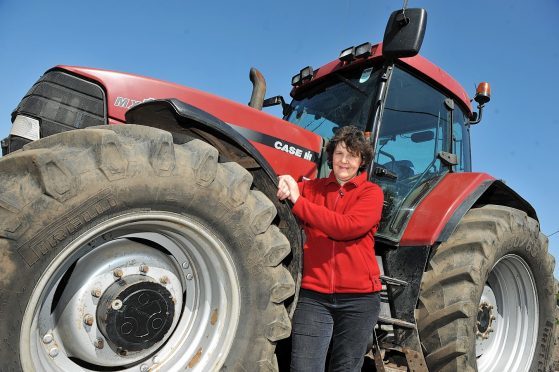The prevalence of mental ill-health across Britain is on the rise, with an estimated one in four people experiencing a problem in any one year.
With prescriptions at record levels and a huge demand for alternative therapies, the UK Government tasked health and social care commissioners with exploring alternative options – and they have revealed farming could provide an answer.
A farming experience, according to a new report by Natural England, improves health and wellbeing through increased engagement with nature, farm animals, growing crops and looking after the countryside.
And these nature-based interventions could, in turn, it said, provide new solutions for improvements in mental health care.
Across Scotland, a number of farmers and crofters have already seen the wide-ranging benefits that agricultural and countryside experiences can offer.
Care Farming Scotland (CFS) was established in 2008 by a group of farmers with a keen interest in utilising agriculture for wider public benefit.
The initiative is now a fully constituted company and a registered charity and although CFS is not actively involved in the delivery of care farming services, it functions to support those who are.
Currently, around 20 farms from Ullapool to Dumfries are involved in Scotland’s care farming movement.
But, according to CFS development consultant Caroline Matheson, there’s scope for many more.
She said the CFS initiative was originally inspired by a similar movement pioneered in the Netherlands, where more than 1,000 farms combine agricultural production with mainstream health and social services to the benefit of more than 15,000 people each year.
“Care farms provide amazing health, social or educational care services for a range of vulnerable groups of people,” said Caroline, who, alongside farming, has a history of working for the NHS as a nurse, midwife, manager and educator.
She said access to farming and the countryside can help many young people and adults, not least those with mental health problems, those suffering from mild to moderate depression, people with substance misuse history, adults and children with learning disabilities, children with autism, disaffected young people or even people on probation.
While the idea might initially seem daunting, the initiative is something almost anyone can get involved with – from crofting or farming individuals to families with anything upward of even just an acre of land – and can provide a welcome, diversified income.
Caroline, who farms alongside her husband Brian at Ballicherry Farm, Balblair, near Dingwall, uses just a small proportion of farmland for the provision of care.
“Unlike many types of diversification, there is no significant start-up cost to becoming involved with care farming,” she said.
“You really just need something like a bothy – in our case we installed a portable building – as somewhere warm to take refuge if the weather turns wet or particularly cold, with a toilet, a heater and a kettle to make warm drinks like tea or coffee.
“It doesn’t have to be fancy,” she said.
“Nor does it have to take up a significant amount of your time. You can dedicate as many or as few hours a day, or week, to the cause.
“You also don’t have to have any previous experience as any training or support you might require is available to you.
“Ultimately you are sharing a love for farming, animals and the outdoors, with a focus on inclusion,” Caroline said.
At Ballicherry, like many of Scotland’s care farms, therapy is provided by involvement with traditional farming activities that often varies for each individual.
“Care farming lends itself very well to old-fashioned farming methods and simple tasks, like using wheelbarrows, tending to crops and feeding animals,” Caroline added.
“We teach and focus upon things like animal husbandry – we have around a dozen hens, five pigs and 120 ewes that attendees help us to look after. We focus on what people can do, not what they can’t. It really helps with their self-esteem.
“We also have cattle over winter and grow vegetables in a polytunnel, so there’s something for everyone and a variety of activities throughout each season of the year.”
Caroline said, through her involvement with CFS, she has met many people keen to get involved with the initiative as a way to both diversify and “give something back”.
Retired health professionals or teachers, crofters and farmers, their wives, sons and daughters can all be found behind the scenes at various care farms across the country.
“It’s a hugely rewarding role that gives you the opportunity to not only help people, but to see them grow in confidence and flourish as individuals, gaining jobs and learning from their achievements,” Caroline added.
“Absolutely anyone can get involved that has a passion for farming and helping people.”
The care farm at Ballicherry is supported by a service level agreement with Highlands and Islands Council – providing a source of income that Caroline said provided the difference between making a successful living from a small holding or croft.
“Farming offers such a unique way of life and it’s a joy to be able to share that for a far wider benefit,” Caroline added.










